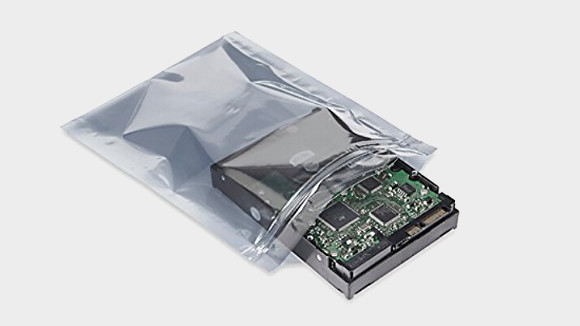How to move your PC
Moving a desktop computer isn't as difficult as it sounds.

The thought of shipping thousands of dollars' worth of fragile electronics any distance is a little intimidating. But, while desktops aren't nearly as sturdy and portable as laptops are, they're actually not that difficult to move—companies ship fully-built rigs across the world all the time.
I've moved my current tower three times—across California, across the U.S., and across the Pacific—without damage. As long as you take a couple of basic precautions and pack it up like your physics teacher is about to drop it off of a roof, you shouldn't have any trouble traveling the world with your desktop.
Here are some tips for moving your PC any distance:
Back it up
You probably already have a recent backup—because you back up your PC regularly, like you're supposed to—but it's still a good idea to perform a full backup before you do anything crazy, like stick it on a plane. Make a few backups, if possible, because external drives can also get lost or damaged in transit. If you're not going to be the one transporting your PC, you may just want to pull the hard drive out and take it with you—in a worst-case scenario, you'll have your data and computer-thieves won't.
Unplug everything (and organize it)
This might sound like a no-brainer, but you should turn your PC off and unplug all external cables (mouse, keyboard, speakers, PSU, etc.) before you move it. Even if you're only taking it to a different room, trust me—it's much easier to move a box that doesn't have six trip-hazards dangling from it. This is also the perfect time to untangle, wrap, and label your cables for shipping, easy post-move setup, and cable management in general.
Remove larger components
Not all components—you don't ever really need to disassemble your PC to move it unless you really want to. But for longer moves, it's a smart idea to take a look inside your tower and remove any large/heavy components attached to the motherboard, such as the graphics card. Place removed components in their original packaging, if you still have it. If you don't have the original packaging, put them in anti-static bags, wrap them in bubble wrap, and pack each component in its own small box.

If you don't need (or want ) to remove any components but your tower has some empty space, you may want to fill that space with a packing material such as sealed air or foam. If you use an expandable foam pack like Instapak, make sure it doesn't expand behind any components because it will be tricky to remove.
The biggest gaming news, reviews and hardware deals
Keep up to date with the most important stories and the best deals, as picked by the PC Gamer team.
Pack like a pro
The best box for your PC is the one that fits it perfectly—in other words, the box it came in. If you still have your PC's (or your case's) original packaging, perfect. If you don't, no problem—you should be able to find a tower-sized box at a local electronics store (they're usually willing to part with extras if you ask nicely) or at a shipping supply store. If you can't find a box at all, it's pretty easy to make one from a larger box using a box cutter and lots of tape.
For shipping, I like the box-within-a-box method. Wrap your tower in bubble wrap (or use the original padding) so it fits snugly in its box. Then find or make a box that's about five inches larger (on all sides) than the first box. Put the first box inside this box and bolster it on all sides with padding—packing peanuts, sealed air, expandable foam, or towels are all good options. Most peripherals are sturdy and don't need a ton of special treatment, but this is also how you should pack monitors (pack the stand separately).
Put it on the floor
Taking your PC on a road trip? I know it's tempting to stick your tower in the passenger seat and buckle it in (and ignore any complaints from people who have to ride in the backseat), but that's not really the best place for it. If you slam on the brakes while your tower's riding shotgun, the seatbelt isn't going to stop it from jolting forward and potentially damaging components.
Instead, the best place for a PC is on the floor of your car, lying horizontally (motherboard side down), and wedged into place with towels and blankets—mid-sized towers usually fit behind the passenger seat. You can also put it in a well-packed trunk, but if you're driving during the summer it's better to keep it in the air-conditioned cabin. And if you decide to stop anywhere on your journey, bring your PC into the hotel room—thieves will break into cars for less.

